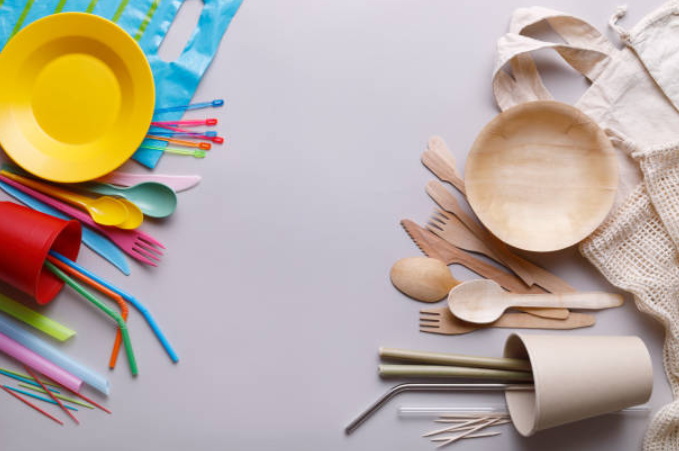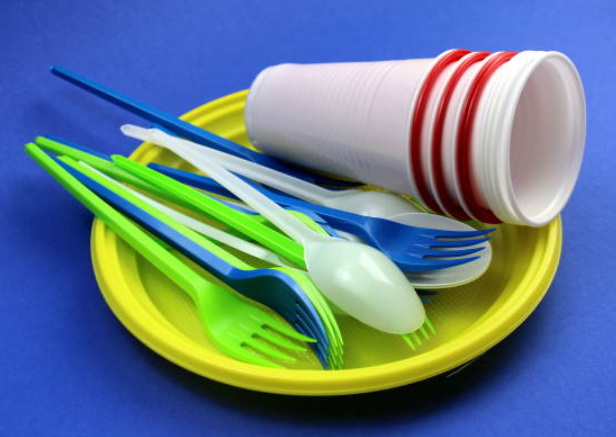
Content Menu
● Why Choose Non-Plastic Disposable Cutlery?
>> 1. Environmental Benefits
>>> Reduction in Plastic Pollution
>>> Lower Carbon Footprint
>>> Supporting Circular Economy
>> 2. Health Advantages
>>> Non-Toxic Composition
>>> Antimicrobial Properties
>> 3. Aesthetic Appeal
>>> Customizable Designs
>> 4. Versatility and Durability
>>> Heat Resistance
>>> Strength
● Popular Types of Non-Plastic Disposable Cutlery
>> 1. Wooden Cutlery
>>> Advantages of Wooden Cutlery
>> 2. Bamboo Cutlery
>>> Why Bamboo Stands Out
>> 3. Plant Fiber Cutlery
>>> Key Features of Plant Fiber Utensils
>> 4. Palm Leaf Utensils
>>> Unique Benefits of Palm Leaf Utensils
>> 5. Edible Cutlery
>>> Innovative Features of Edible Cutlery
● Comparison: Non-Plastic vs Plastic Disposable Cutlery
● Challenges in Adopting Non-Plastic Disposable Cutlery
>> 1. Cost Barrier
>> 2. Limited Availability
>> 3. Composting Infrastructure
● Conclusion
● Frequently Asked Questions (FAQ)
>> 1. What materials are used in non-plastic disposable cutlery?
>> 2. Can non-plastic disposable cutlery be used with hot foods?
>> 3. How should I dispose of compostable cutlery?
>> 4. Are non-plastic utensils more expensive than plastic ones?
>> 5. What is the most eco-friendly type of non-plastic disposable cutlery?
The growing environmental concerns surrounding single-use plastics have led to a significant shift toward sustainable alternatives. Non-plastic disposable cutlery, made from materials such as wood, bamboo, plant fibers, or even edible substances, offers an eco-friendly solution to the global plastic waste problem. This article explores the numerous benefits of non-plastic disposable cutlery, its impact on the environment and human health, and why it is becoming a popular choice for businesses and consumers alike.

Why Choose Non-Plastic Disposable Cutlery?
1. Environmental Benefits
Non-plastic disposable cutlery is typically biodegradable and compostable, which means it breaks down naturally without leaving harmful microplastics behind. Materials like wood, bamboo, and plant fibers decompose within months when disposed of properly, reducing landfill waste significantly.
Reduction in Plastic Pollution
Plastic utensils are notorious for their inability to decompose. They often end up in oceans and other natural habitats, harming wildlife and ecosystems. Non-plastic disposable cutlery eliminates this issue by decomposing naturally.
Lower Carbon Footprint
The production process for wooden or bamboo cutlery uses renewable resources and emits fewer greenhouse gases compared to plastic manufacturing. For instance, bamboo grows quickly without requiring fertilizers or pesticides, making it an ideal sustainable material.
Supporting Circular Economy
Compostable cutlery contributes to a circular economy by turning waste into valuable resources like organic compost. This helps reduce reliance on non-renewable resources while promoting sustainable agricultural practices.
2. Health Advantages
Plastic utensils often leach harmful chemicals such as BPA (Bisphenol A) and phthalates into food, especially when exposed to heat. Non-plastic alternatives are free from toxins, making them safer for humans.
Non-Toxic Composition
Wooden and bamboo cutlery do not release chemicals into food or the environment during use or disposal. This makes them ideal for families with children or individuals who prioritize health-conscious dining.
Antimicrobial Properties
Wood has natural antimicrobial qualities that inhibit bacterial growth, enhancing food safety. This property is particularly beneficial in outdoor settings like picnics or food festivals where hygiene can be a concern.
3. Aesthetic Appeal
Non-plastic disposable cutlery offers a rustic and elegant appearance that complements eco-conscious dining experiences. Materials like palm leaves or bamboo create visually appealing utensils suitable for events or upscale catering services.
Customizable Designs
Many manufacturers offer customization options for non-plastic disposable cutlery, allowing businesses to add logos or unique designs that align with their brand identity. This feature is especially popular in the hospitality industry.
4. Versatility and Durability
Non-plastic options are designed to handle both hot and cold foods effectively:
Heat Resistance
Wooden cutlery can withstand high temperatures without warping or releasing toxins. This makes it suitable for serving soups, coffee, or other hot dishes.
Strength
Bamboo utensils are sturdy enough for dense foods like steak or pasta salads, while palm leaf options provide durability with a natural finish.

Popular Types of Non-Plastic Disposable Cutlery
1. Wooden Cutlery
Made from renewable resources like birchwood, wooden utensils are biodegradable and compostable. They are ideal for hot foods and offer a smooth texture free from splinters.
Advantages of Wooden Cutlery
- Lightweight yet durable
- Naturally biodegradable
- Affordable compared to other non-plastic options
2. Bamboo Cutlery
Bamboo is a fast-growing plant that provides durable and lightweight utensils. Bamboo cutlery is reusable in some cases and decomposes quickly when discarded.
Why Bamboo Stands Out
- Rapid growth cycle ensures sustainability
- Stronger than most wooden alternatives
- Aesthetic appeal with smooth finishes
3. Plant Fiber Cutlery
Derived from agricultural by-products like sugarcane or wheat straw, plant fiber utensils are fully compostable within 60–90 days under industrial conditions.
Key Features of Plant Fiber Utensils
- Made from waste materials
- Suitable for industrial composting
- Lightweight yet sturdy
4. Palm Leaf Utensils
Crafted from fallen leaves of Areca palm trees, these utensils are 100% organic and sturdy enough for heavy meals. They also support sustainable agriculture practices in tropical regions.
Unique Benefits of Palm Leaf Utensils
- No chemicals used in production
- Each piece has a unique texture
- Ideal for formal events
5. Edible Cutlery
Edible spoons and forks made from grains like sorghum or wheat offer a unique solution to waste reduction—they can be consumed after use or biodegrade within days if discarded.
Innovative Features of Edible Cutlery
- Zero waste: Can be eaten after use
- Perfect for eco-conscious events
- Adds novelty to dining experiences
Comparison: Non-Plastic vs Plastic Disposable Cutlery
| Feature | Plastic Cutlery | Non-Plastic Cutlery |
| Biodegradability | Non-biodegradable; persists for centuries | Fully biodegradable within months |
| Environmental Impact | High; contributes to pollution | Low; reduces landfill waste |
| Health Safety | May leach chemicals into food | Free from toxins; safe for all users |
| Aesthetic Appeal | Generic design | Rustic and eco-friendly appearance |
| Cost | Low upfront cost | Higher cost but eco-friendly benefits |
Challenges in Adopting Non-Plastic Disposable Cutlery
While non-plastic disposable cutlery offers numerous benefits, there are challenges that need to be addressed:
1. Cost Barrier
Non-plastic options tend to be more expensive than plastic ones due to their sustainable sourcing and manufacturing processes. However, as demand increases and production scales up, costs are expected to decrease over time.
2. Limited Availability
In some regions, non-plastic disposable cutlery may not be readily available due to logistical challenges or lack of awareness among consumers and businesses.
3. Composting Infrastructure
Proper disposal of compostable cutlery requires access to industrial composting facilities, which may not be available everywhere. Educating consumers about proper disposal methods is crucial.
Conclusion
Non-plastic disposable cutlery provides an environmentally friendly alternative to traditional plastic utensils. With benefits ranging from reduced carbon footprints to improved health safety, these sustainable options are paving the way for a greener future. Businesses and individuals can contribute to this positive change by adopting wooden, bamboo, or compostable utensils in their daily lives.
By making conscious choices about the materials we use daily—whether at home or during events—we can collectively reduce plastic waste and protect our planet for future generations.

Frequently Asked Questions (FAQ)
1. What materials are used in non-plastic disposable cutlery?
Non-plastic disposable cutlery is made from materials such as wood (birch), bamboo, plant fibers (sugarcane or wheat straw), palm leaves, or edible substances like sorghum flour.
2. Can non-plastic disposable cutlery be used with hot foods?
Yes! Wooden and bamboo utensils are heat-resistant and safe for hot foods without warping or releasing toxins.
3. How should I dispose of compostable cutlery?
Compostable cutlery should be disposed of in industrial composting facilities where they can break down effectively within months. Home composting may also work for certain materials like wood or bamboo.
4. Are non-plastic utensils more expensive than plastic ones?
Generally, yes—non-plastic options have higher upfront costs due to their sustainable production processes. However, their environmental benefits outweigh the price difference in the long term.
5. What is the most eco-friendly type of non-plastic disposable cutlery?
Wooden and bamboo cutlery are among the most eco-friendly options due to their biodegradability and renewable sourcing practices.

















